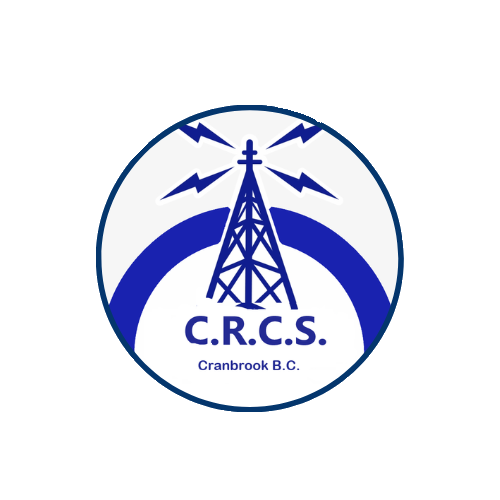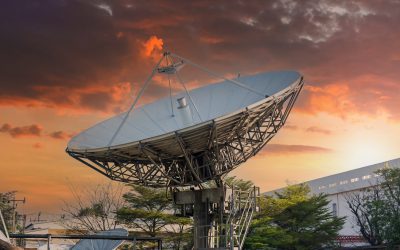In the face of the fiery wilderness, the Cranbrook Radio Club Society (CRCS) extends a guiding hand. Join us on a comprehensive journey into “Wildfire Preparedness,” where safety meets strategy. Together, let’s master the flames and forge a path through the critical steps to safeguarding lives and property.
Understanding the Wildfire Menace
In the face of nature’s fury, comprehending the wildfire menace is the first crucial step toward effective preparedness. Wildfires are dynamic, uncontrollable infernos fueled by combustible vegetation, often exacerbated by dry conditions, strong winds, and varying topographies. Their rapid spread can turn a small spark into a roaring blaze, covering vast expanses within moments. The unique challenge of wildfires lies in their ability to change direction swiftly, creating unpredictable patterns that challenge conventional containment efforts. Understanding fire behavior is fundamental – wildfires can exhibit erratic movements, producing embers that travel ahead, starting new fires in seemingly isolated areas. Identifying high-risk zones, where factors like dry vegetation, wind patterns, and terrain converge, is essential for preemptive measures, turning knowledge into the primary defense against this formidable menace.
Navigating the complexities of the wildfire menace demands an awareness of the environmental factors that contribute to their ignition and propagation. Beyond the visible flames, wildfires generate intense heat that can create its weather patterns, further complicating firefighting efforts. The topography of an area significantly influences fire behavior, as slopes can accelerate the spread, and valleys may funnel the flames. Urban-wildland interfaces amplify the threat, placing communities at the frontline of potential danger. Recognizing these nuances enables proactive planning and strategic decision-making in the face of impending fire events. In essence, a comprehensive understanding of the wildfire menace empowers communities to develop informed strategies, allocate resources effectively, and implement measures that can mitigate the devastating impact of these natural disasters.
Fire-Resistant Landscaping: Creating a Buffer Zone
In the realm of wildfire preparedness, harnessing the power of landscaping transforms your property into a strategic defense against encroaching flames. Opting for fire-resistant landscaping practices is akin to creating a green shield, acting as a formidable barrier to protect your home. The selection of the right plants is paramount, favoring those with higher moisture content and lower flammability. Native plants like succulents, deciduous trees, and well-maintained lawns contribute to creating defensible spaces around your property. These spaces act as vital firebreaks, hindering the progress of wildfires and providing firefighters with a safer zone to work from. Additionally, strategic placement of fire-resistant plants around structures can fortify your perimeter, reducing the risk of flames reaching vulnerable points and enhancing the overall resilience of your property in the face of a wildfire threat.
The concept of fire-resistant landscaping extends beyond the choice of plants; it encompasses the arrangement and maintenance of outdoor spaces to minimize fire hazards. Creating defensible spaces involves maintaining a safe distance between trees, removing dead vegetation, and thinning out dense plantations to disrupt the continuity of potential fuel. This approach not only impedes the fire’s progress but also enhances the chances of successfully defending your property. Regular landscaping practices, such as pruning overhanging branches and clearing debris, contribute to reducing the available fuel for fires. By implementing these strategic landscaping measures, homeowners can significantly bolster their defenses, creating a well-prepared and fire-resilient haven amid the threat of wildfires.
Emergency Evacuation Plans: Routes to Safety
As the specter of a wildfire looms, having a well-crafted emergency evacuation plan is instrumental in ensuring the safety of both individuals and communities. Begin by outlining clear and well-defined routes to safety, taking into account multiple exit options and considering alternative paths in case primary routes are compromised. Establishing a family evacuation kit is pivotal – a carefully curated collection of essential items including important documents, medication, non-perishable food, water, and clothing. This kit serves as a lifeline during evacuation, providing sustenance and critical supplies to weather the transition to safety. Moreover, ensuring that each family member is familiar with the evacuation plan and the location of the designated meeting point enhances coordination, minimizing confusion during the critical moments of evacuation.
Communication protocols play a central role in the effectiveness of any evacuation plan. Emphasize the importance of staying informed through official channels, such as local authorities or emergency services, and maintaining constant communication with family members, neighbors, and community members. Designate a reliable point of contact outside the affected area to serve as a hub for updates and information exchange. This ensures that everyone is on the same page regarding evacuation routes, safe zones, and potential changes in the wildfire situation. By prioritizing clear communication, families and communities can navigate the challenges of evacuation with a unified and informed approach, facilitating a swift and secure escape from the path of the advancing blaze.
Wildfire Preparedness: Wildfire-Resistant Structures
Transforming your home into a fortress against the ferocity of wildfires begins with embracing wildfire-resistant construction practices. Consider advocating for the use of building materials that demonstrate a high resistance to fire, such as non-combustible roofing materials, tempered glass windows, and fire-resistant siding. These choices fortify the structure, creating a robust line of defense against ember attacks and direct flame exposure. In addition to material selection, delve into design considerations that enhance the overall fire resilience of your home. This may include strategically placing structures away from the forested edges, employing firebreaks, and adopting landscaping practices that minimize the proximity of flammable vegetation to the building.
Retrofitting your home with wildfire-resistant techniques is a proactive measure that significantly contributes to its resilience. Explore retrofit options such as adding spark arresters to chimneys, installing ember-resistant vents, and sealing any gaps or openings in the structure that might allow embers to infiltrate. Consider upgrading windows to double-paned glass, which is more resistant to radiant heat. The goal is to create a defensible space around your home, reducing the risk of ignition from flying embers and radiant heat. By implementing these construction practices and retrofitting techniques, your dwelling evolves into a resilient sanctuary, better equipped to withstand the challenges presented by the relentless advance of wildfires.
Radio Communication in Wildfire Scenarios
Amidst the chaos of a raging wildfire, effective communication stands as the crucial lifeline for both responders and residents alike. Radio communication plays an indispensable role in wildfire scenarios, providing a reliable means to coordinate emergency responses, disseminate crucial information, and ensure the safety of communities in the fire’s path. Establishing robust communication networks becomes paramount, utilizing radio systems that can withstand the challenges posed by dense smoke, rapidly changing conditions, and potential infrastructure damage. In this dynamic environment, the ability to swiftly relay information is not just a convenience but a necessity, enabling timely evacuations, resource allocation, and coordination of firefighting efforts.
Navigating through the complexities of wildfire scenarios requires a strategic approach to radio communication. Emphasize the use of emergency frequencies dedicated to wildfire response, ensuring that crucial messages cut through the noise and chaos. Encourage the adoption of reliable communication protocols, allowing for clear and concise exchanges even in the face of adversity. Additionally, the deployment of radio networks that are resilient to interference and capable of adapting to challenging terrain becomes pivotal. In essence, understanding the role of radio communication in the context of wildfires empowers communities to maintain connectivity when traditional channels might falter, fostering a cohesive response that is instrumental in mitigating the impact of these destructive events.
Wildfire Drills and Training: Preparation Par Excellence
Preparation for wildfire incidents is a cornerstone of resilience, and CRCS underscores the vital role of wildfire drills and training as an essential element of this readiness. Through engaging in realistic simulations, communities can effectively enhance their preparedness levels by familiarizing residents with crisis protocols, evacuation procedures, and coordinated response efforts. Wildfire drills provide a practical avenue for residents to experience the urgency and decision-making required during an actual emergency, fostering a sense of readiness and confidence in the face of a potential wildfire threat.
A comprehensive wildfire preparedness plan is incomplete without a commitment to ongoing training initiatives. CRCS encourages communities to prioritize continuous learning, ensuring that residents remain well-versed in the evolving dynamics of wildfire response. By participating in regular training sessions, community members can stay informed about the latest firefighting techniques, emergency communication protocols, and safety measures. This proactive approach not only bolsters individual preparedness but also contributes to the collective resilience of the community, fostering a culture of shared responsibility and mutual support in the face of the ever-present wildfire risk.
Staying Informed: Weather Watch
In the intricate ballet between wildfires and the environment, understanding the nuances of weather patterns is a critical aspect of wildfire preparedness. Staying informed about weather conditions is paramount, as wildfires are profoundly influenced by factors such as wind speed, humidity levels, and temperature variations. CRCS emphasizes the importance of recognizing fire weather conditions, where a combination of dry vegetation and specific meteorological elements creates an environment conducive to rapid fire spread. By staying attuned to approved forecasting tools and weather updates, individuals can gain the wisdom needed to navigate the ever-changing dynamics of the fire weather landscape.
In the realm of wildfire preparedness, the ability to interpret weather forecasts becomes a powerful tool for preemptive action. CRCS encourages communities to stay abreast of official weather forecasts, utilizing reliable sources to receive timely and accurate information. By understanding upcoming weather patterns, residents can make informed decisions about outdoor activities, implement protective measures, and remain vigilant during periods of heightened fire risk. This proactive approach, grounded in meteorological awareness, empowers individuals and communities to take preemptive measures, reducing the potential impact of wildfires and fostering a culture of resilience in the face of dynamic environmental conditions.
Coordinating the Battle Against Wildfires
As wildfires unleash their fury, the coordinated efforts of emergency response teams become the frontline defense against encroaching flames. Establishing emergency response coordination centers is a pivotal aspect of wildfire preparedness. These centers serve as command hubs, strategically located to facilitate rapid deployment and effective coordination of resources. CRCS underscores the importance of real-time information exchange within these centers, enabling timely decision-making and resource allocation. Coordinating agencies, including fire departments, law enforcement, and other relevant entities, collaborate seamlessly in these centralized hubs to orchestrate a comprehensive response to the dynamic challenges posed by wildfires.
Within the emergency response coordination centers, strategies for efficient resource deployment take center stage. CRCS advocates for a well-organized system that optimizes the allocation of firefighting personnel, equipment, and support services. The coordination extends beyond local efforts, often involving regional and national collaborations to pool resources and expertise. Effective communication networks are established to relay critical information, ensuring that response teams are synchronized in their efforts. This strategic coordination not only enhances the efficiency of firefighting operations but also reinforces the ability to adapt swiftly to the evolving nature of wildfires. The establishment of these coordination centers embodies a collective commitment to combatting the wildfire menace through a unified and organized front.
Forging a Future Beyond the Blaze
As we conclude this expedition into wildfire preparedness, CRCS invites you to forge a future beyond the blaze. Together, let’s master the flames through knowledge, strategy, and unity. The journey to wildfire resilience starts with CRCS, your steadfast companion in facing the untamed wilderness.
By embracing CRCS strategies for wildfire preparedness you not only secure your own safety but also contribute to the collective resilience of your community. Stand with CRCS and face the flames with wisdom, courage, and a vision for a future beyond the blaze.




